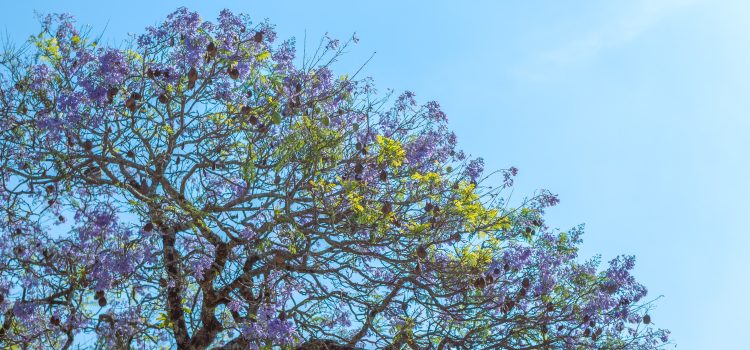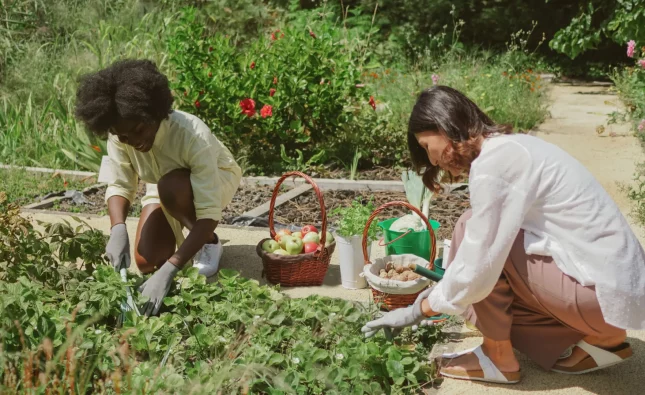
Welcome to the world of gardening, where beauty and serenity are just a few steps away from your doorstep. However, maintaining a garden can be quite overwhelming for some people, especially when you have other priorities that demand your time and attention. The good news is that designing a low-maintenance garden doesn’t mean sacrificing its beauty or charm! In this blog post, we’ll explore strategies and tips on how to create an easier upkeep garden without compromising its long-term appeal. So get ready to roll up your sleeves and discover the secrets of designing a stunning yet low maintenance garden!
Incorporate native plants into your garden design
Native plants are a fantastic choice for any low-maintenance garden. They’re adapted to the local climate and soil conditions, so they require less water, fertilizer, and overall care than non-native species. Plus, they provide essential habitat and food sources for local wildlife.
Before you start incorporating native plants into your garden design, do some research on which species thrive in your area. Local nurseries or gardening centers can be a great resource for finding the right plants to suit your needs.
Once you’ve chosen your native plant selections, it’s time to plan out their placement in your garden. Consider factors such as sunlight exposure and soil drainage when deciding where each plant will go.
Another key benefit of using native plants is that they tend to be more resistant to pests and diseases compared to non-native species. This means less time spent spraying chemicals or dealing with infestations.
Incorporating native plants into your garden design is an excellent way to reduce maintenance tasks while still enjoying beautiful blooms and foliage year-round!
Use mulch to reduce weed growth and conserve moisture
One of the best ways to reduce weed growth and conserve moisture in your garden is by using mulch. Mulch can be any material that covers the soil surface, including wood chips, shredded leaves, bark, or straw.
When applied properly, mulch helps to suppress weeds by blocking sunlight from reaching weed seeds that are trying to germinate. This reduces the amount of time you spend pulling weeds in your garden.
Mulch also conserves moisture by reducing evaporation from the soil surface. This means you won’t have to water as frequently during dry spells or hot weather.
In addition to its practical benefits, mulch can also add aesthetic appeal to your garden design. Choose a color and texture that complements your plantings for a cohesive look.
It’s important to note that not all types of plants benefit from mulch – some prefer bare soil for optimal growth. Be sure to research which plants in your garden will thrive with a layer of mulch before applying it haphazardly.
Incorporating an appropriate amount of quality organic matter into your landscape can provide numerous benefits while decreasing future expenses on maintenance and upkeep.
Group plants together based on their water needs
When designing a low-maintenance garden, grouping plants together based on their water needs is a crucial strategy to consider. Some plants require more water than others, and it’s important to group them in an efficient way that conserves resources.
One approach is to divide your garden into zones based on the amount of sun exposure each area receives. For example, you might have a high-sun zone with plants that thrive in full sunlight and need regular watering, while another zone might be shaded and require less frequent watering.
Another factor to consider when grouping plants by water needs is the type of soil they prefer. Some plants do well in moist soil, while others thrive in drier conditions. Consider planting moisture-loving species near water sources or areas where rainwater tends to collect.
Taking the time to research plant varieties and group them appropriately can save time, energy and resources over the long term. By creating microclimates within your garden that cater specifically to different plant requirements for light, hydration levels and other factors you will reduce maintenance work while still enjoying alluring outdoor spaces throughout every season.
Be prepared to make some compromises
Creating a low-maintenance garden does not mean that you will have to sacrifice beauty and variety. However, it is important to be realistic about the time and resources you can dedicate to your garden’s upkeep. You may need to make some compromises when selecting plants and designing your landscaping.
One compromise you may need to make is choosing plants that are both attractive and easy-to-care for instead of exotic or high-maintenance species. Native plants are often an excellent choice because they are adapted to the local climate, require less water, fertilizer, and pesticides than non-native species.
Another way in which you may need to compromise is by reducing the size of your lawn or eliminating it altogether. Lawns require frequent watering, mowing, fertilizing, and pest control measures if they are going to look their best throughout the year.
You should also consider grouping together plantings with similar water requirements so that you can more easily manage irrigation needs without overwatering certain areas or under-watering others. This approach will help reduce waste while keeping your landscape healthy.
Creating a low-maintenance garden requires careful planning with practical considerations in mind such as budget limitations and existing weather conditions. Making smart choices on plant selection through compromising but prioritizing native species alongside proper groupings can help create long-term beauty without sacrificing too much effort on maintenance tasks.
Conclusion
Creating a low-maintenance garden is not only about reducing the time and effort you spend on upkeep, it’s also about creating a space that brings joy and beauty to your life. With careful planning, smart plant choices, and strategic design decisions, you can create an outdoor oasis that requires minimal work while providing maximum enjoyment.
Incorporating native plants into your garden design will reduce maintenance needs by creating a more natural balance in your yard. Grouping plants together based on their water needs will help conserve resources and make watering easier. Mulching around plant beds will reduce weeds and retain soil moisture.
Be prepared to make some compromises as you plan your low-maintenance garden. It may mean sacrificing some of your favorite ornamental plants for species better suited to your climate or choosing lower maintenance hardscaping options over high-maintenance features like ponds or fountains.
By following these strategies for easier upkeep and long-term beauty, you’ll be able to sit back, relax, and enjoy the fruits of your gardening labor without feeling overwhelmed by endless tasks. A low-maintenance garden is truly a gift that keeps on giving!










